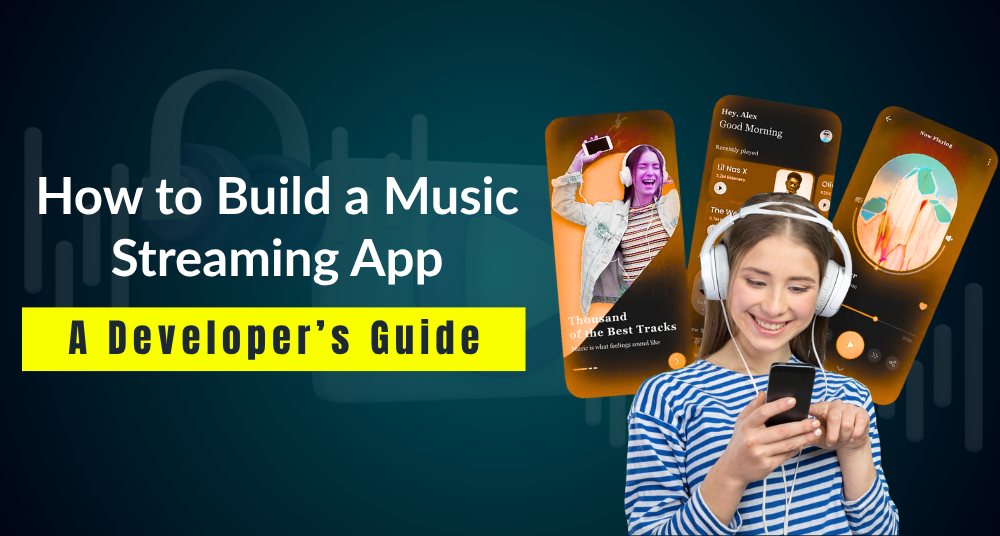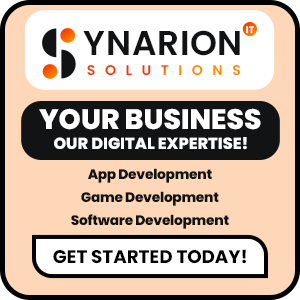The way people consume music has changed drastically in the past decade. Gone are the days when listeners downloaded MP3s or bought CDs. Today, everything revolves around streaming — fast, on-demand, and personalized.
Apps like Spotify, YouTube Music, and Apple Music have set the standard for what modern users expect from digital music experiences. But with evolving technologies and affordable cloud services, building your own music streaming app has become easier and more profitable than ever.
In this complete guide, we’ll walk through everything you need to know about music streaming app development in 2025 — from features and licensing to tech stacks, monetization, and future trends.
The Rise of Music Streaming
Music streaming has become a core part of digital entertainment worldwide. Users now stream millions of tracks every day across genres, languages, and platforms.
According to Statista, the global music streaming market is expected to reach $42.9 billion by 2029, growing steadily each year. This shift isn’t just about convenience — it’s about personalization, accessibility, and a seamless user experience.
Streaming apps have also empowered independent artists to share their work globally without needing big record labels. The combination of accessibility, AI-driven curation, and affordable mobile internet has made streaming an essential part of everyday life.
Why You Should Build a Music Streaming App
The demand for audio content — including music, podcasts, and live sessions — continues to grow. Businesses that invest in music streaming platforms can tap into several opportunities:
- Recurring revenue from subscriptions and in-app purchases.
- Direct engagement with users through AI-driven personalization.
- New income streams for artists and creators.
- Cross-platform reach across mobile, web, and smart devices.
- Community-building through social features and collaborations.
Whether you’re a startup, record label, or media brand, launching a music streaming app in 2025 can help you build a loyal audience while expanding your brand into the growing digital entertainment economy.
Core Features Every Music Streaming App Needs
To create a high-quality music streaming experience, you must include features that ensure seamless playback and intuitive navigation.
Essential Core Features:
- User Registration & Profiles – Simple signup via email or social accounts.
- Smart Search – Search by artist, album, lyrics, or mood.
- Music Library – A well-organized database of tracks, albums, and genres.
- Playlist Creation & Management – Users can create and share custom playlists.
- Offline Playback – Download songs for offline listening.
- Audio Player Controls – Shuffle, repeat, favorite, and queue options.
- Push Notifications – Alerts for new releases or recommendations.
- Subscription Plans – Paid memberships for ad-free streaming.
- User Analytics – Personalized suggestions based on listening habits.
- Admin Panel – Manage content, analytics, and user reports.
These features form the backbone of your app and ensure a smooth user experience.
Advanced Features to Stand Out
To compete with global apps, you must include unique and innovative functionalities that keep users engaged.
Advanced Features to Include:
- AI-Powered Recommendations – Suggest tracks based on user behavior and listening mood.
- Voice Command Integration – Use voice assistants for hands-free navigation.
- Collaborative Playlists – Let multiple users build playlists together.
- Lyrics Display (Musixmatch API) – Display synced lyrics in real time.
- Live Streaming & Virtual Concerts – Host artist events or exclusive sessions.
- Podcast Integration – Expand content variety by including podcasts.
- Social Sharing – Enable users to share songs or playlists on social media.
- Multi-Device Sync – Seamless playback across mobile, web, and smart TVs.
These advanced features elevate user experience and boost engagement rates significantly.
How AI Is Shaping the Future of Music Streaming
AI and machine learning are driving the personalization that users love. They help analyze listening habits, moods, and preferences to deliver smarter experiences.
AI use cases in streaming apps:
- Predictive playlists tailored to time, activity, or weather.
- Automatic tagging of songs by mood or genre.
- Intelligent recommendations for new artists or genres.
- Real-time equalizer adjustments for better sound quality.
- Personalized notifications for live concerts or new albums.
AI not only improves engagement but also increases retention by making every user feel like the app understands them.
Music Licensing and Legal Compliance
Before you release your app, it’s crucial to obtain the necessary music rights and licenses. Without proper permissions, streaming copyrighted content can lead to legal penalties.
Essential Licenses You’ll Need:
- Public Performance License – Required to broadcast songs to users.
- Mechanical License – For reproducing and storing music tracks.
- Synchronization License – Needed if music is used in video formats.
- Master License – Grants rights to use original recordings.
Organizations like ASCAP, BMI, SESAC, and PPL help businesses secure these licenses. Make sure you also implement DMCA compliance and set up systems for copyright takedowns to avoid legal issues.
Choosing the Right Tech Stack
Your technology stack determines performance, scalability, and cost. A solid stack supports high-quality streaming, minimal buffering, and seamless user management.
Recommended Tech Stack:
- Frontend: Flutter, React Native, or Swift/Kotlin
- Backend: Node.js, Django (Python), or Laravel (PHP)
- Database: MongoDB, Firebase, or PostgreSQL
- Cloud Hosting: AWS, Google Cloud, or Microsoft Azure
- Streaming Protocols: HLS (HTTP Live Streaming) or DASH
- APIs: YouTube Data API, Spotify API, Musixmatch API for lyrics
Building on these technologies helps you create a stable, future-ready app with smooth playback and high performance.
App Architecture Overview
To deliver fast and reliable streaming, your app’s backend architecture should be robust and scalable.
Core Components:
- CDN (Content Delivery Network): Minimizes buffering and speeds up content delivery.
- Load Balancer: Distributes traffic across multiple servers.
- Microservices Architecture: Keeps features modular and easy to scale.
- Data Encryption: Protects user and content data.
- Analytics Module: Tracks user engagement and trends.
A strong architecture ensures that your app can handle millions of users simultaneously without performance issues.
Designing a Great User Experience (UX)
Your app’s design plays a vital role in retaining users. Keep it simple, modern, and easy to navigate.
Best design practices:
- Prioritize accessibility and responsive design.
- Use bottom navigation tabs for core sections (Home, Search, Library, Profile).
- Highlight album covers and visual elements.
- Include light and dark themes.
- Use animations for smooth transitions.
An intuitive UI can make your app feel professional and enhance brand perception.
Monetization Models That Work
Monetizing your app smartly ensures sustainable revenue without ruining the user experience.
Popular Monetization Strategies:
- Freemium Model: Free access with ads, premium for ad-free streaming.
- Subscription Plans: Monthly or annual pricing for different user tiers.
- In-App Ads: Play targeted audio or video ads for free users.
- Affiliate Marketing: Promote partner music merchandise or tickets.
- Artist Partnerships: Collaborate with musicians for exclusive releases.
- Virtual Events: Sell tickets for live or digital concerts.
Choosing a mix of these models ensures steady income while keeping users happy.
Security & Data Protection
Since Music Streaming Apps store user data, maintaining high security is essential.
Best practices:
- Use SSL/TLS encryption for data transfers.
- Implement 2FA or biometric logins.
- Comply with GDPR and CCPA standards.
- Use DRM (Digital Rights Management) to prevent piracy.
- Regularly update servers and frameworks for security patches.
Security builds trust — a key factor in user retention.
Music Streaming App Development Stages Explained
Here’s a step-by-step look at the typical music streaming app development process:
- Discovery & Research – Identify target audience and feature scope.
- Wireframing & Design – Build UI/UX prototypes.
- Backend & API Setup – Build server-side infrastructure.
- Frontend Development – Implement UI for Android, iOS, and web.
- Integration of Streaming Services & Databases.
- Testing & Quality Assurance – Identify bugs and optimize performance.
- Launch – Deploy on app stores.
- Post-Launch Support – Maintain, update, and scale as needed.
Testing and Optimization
Before going live, test your app thoroughly to ensure quality and performance.
Testing includes:
- Functional Testing
- Performance & Load Testing
- Security Testing
- Device Compatibility Testing
- Beta User Feedback
Testing ensures your app is stable and provides a smooth user experience across devices.
Marketing & Launch Strategy
An excellent Music Streaming App needs strong marketing to gain visibility.
Effective Marketing Tactics:
- Pre-launch teasers and social media campaigns.
- Influencer or artist collaborations.
- Referral programs with incentives.
- App Store Optimization (ASO) with strong visuals and keywords.
- Press releases and media coverage.
Build hype before launch to attract early adopters and grow quickly.
Development Cost Breakdown
The cost to build a music streaming app depends on complexity, platform choice, and features.
| Type of App | Estimated Cost (USD) |
| Basic MVP | $20,000 – $40,000 |
| Full-Feature App | $50,000 – $90,000 |
| Enterprise-Level Solution | $100,000+ |
These are average estimates and can vary based on region, team size, and feature depth.
Common Challenges and Solutions
Every successful app face challenges — here’s how to address them:
| Challenge | Solution |
| Licensing complexity | Partner with authorized music organizations early |
| High competition | Focus on niche genres or local content |
| Server scalability | Use cloud-based CDN and microservices |
| Retention issues | Leverage AI for personalization and engagement |
Future Trends in Music Streaming App (2025 and beyond)
The future of streaming lies in immersive and social experiences powered by AI, AR, and Web3 technologies.
Emerging trends:
- AI DJs creating personalized mixes.
- Metaverse concerts and 3D sound experiences.
- Music NFTs offering artist ownership and fan engagement.
- Spatial Audio for realistic soundscapes.
- Wearable & Smart Car Integration for continuous streaming.
Adopting these trends early can make your platform future-proof and competitive.
Final Thoughts
Building a music streaming app in 2025 is not just a tech challenge — it’s an opportunity to shape the future of entertainment.
By combining great design, robust technology, and smart monetization, you can create an app that connects artists and audiences in powerful new ways.
Whether you’re developing for a specific niche, targeting a global audience, or experimenting with AI-driven personalization — the key lies in innovation, user experience, and continuous improvement.
FAQs: Music Streaming App Development
1. What licenses do I need to legally stream music?
You’ll need performance, mechanical, synchronization, and master licenses from authorized organizations like ASCAP or BMI.
2. How long does it take to build a Music Streaming App?
Typically 4–8 months, depending on complexity and platform choice.
3. Can I include podcasts in my Music Streaming App?
Yes, integrating podcasts increases content diversity and user retention.
4. How do I monetize my music streaming app?
Through ads, subscriptions, affiliate promotions, and premium features.
5. Which tech stack is best for music streaming apps?
Use Flutter or React Native for cross-platform apps, Node.js or Django for backend, and AWS or Google Cloud for hosting.
Related Blog: Free Offline Music Apps






What do you think?
It is nice to know your opinion. Leave a comment.